The soldiers of the Home Army who successfully assassinated Franz Kutschera, the SS and Police commander in the Warsaw District, did not know that they had interrupted preparations for his wedding. It is hard to believe that although the groom was already dead, the wedding took place. The SS organized a macabre ceremony in Warsaw - a wedding with a corpse.
The name of Franz Kutschera and the course of the attack on him are known to most of us. "Kutscher's Action" is described in many books, and in 1958 a great film was made. Assassination directed by Jerzy Passendorfer. However, let us recall why Kutschera was sentenced to death and how it was carried out.
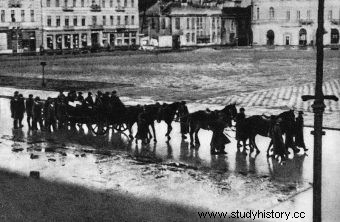
The wedding of Kata of Warsaw was connected with his ... funeral
Franz Kutschera began his service in Warsaw on September 25, 1943. He quickly established himself as a brutal persecutor of Poles, who used drastic methods to fight underground organizations and all, even the smallest, manifestations of resistance against the occupant. From October, mass executions were carried out on the streets of Warsaw almost every day, using the decree on combating attacks on the German reconstruction works in the General Government.
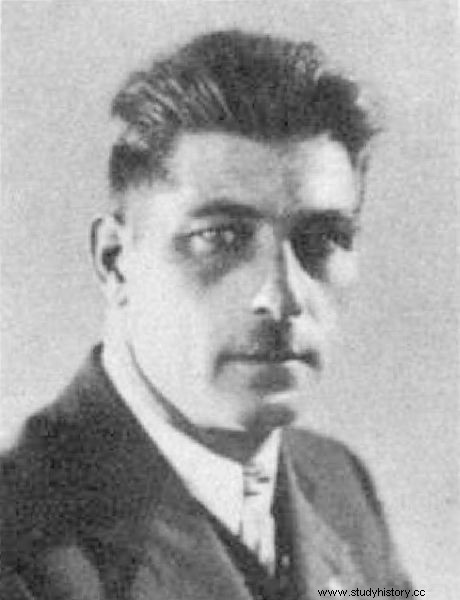
Franz Kutscher
Arrests and round-ups also multiplied in the city, during which the Gestapo handed over both people involved in underground work, as well as random, uninvolved people who wanted to avoid risking themselves at all costs and "quietly" survive the war and the occupation. Those detained in the streets were either taken to concentration camps or shot after short interrogations. The executions were to be a retaliation for the actions of the Polish Underground State against the Germans and to act as a preventive and deterrent.
Kutscher used a bloody rate, recommending that up to 100 Poles should be shot for each killed German. The city's advertising poles were hung with blood-orange posters with long lists of names sentenced to death. They were signed only with the degree of issuing the orders:"SS and Police Commander for the Warsaw District." In street executions, 50 to 100 people were shot every few days. From October 1943 to February 1944, about 5,000 people died there. people. Today, the execution sites from this period of occupation are commemorated by numerous commemorative plaques on the walls of tenement houses.
Death of Franz Kutschera
Polish intelligence took a closer look at the Nazi who was hiding his name. The Home Army intelligence officers, Aleksander Kunicki, pseudonym Rayski, managed to establish the identity and place of residence of the general commanding the German law enforcement and security forces in Warsaw. Determined to be Franz Kutscher. The general lived in al. Róż 2 and traveled to work every day in the Gawronski Palace at al. Ujazdowskich 23 by Opel Admiral with driver and adjutant.
After the trial, the special court of the Command of the Underground Struggle issued a death sentence on Kutschera for crimes against the Polish nation. The execution of the sentence was entrusted to the Agat branch (later Pegaz, later Parasol). It was a special unit of the Kedyw Main Command of the Home Army, responsible primarily for the execution of sentences against the Nazis. The abbreviation "Agat" comes from the words "anti-Gestapo".
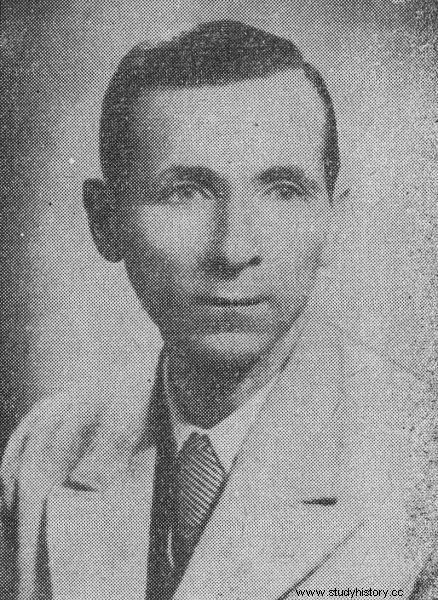
Aleksander Kunicki
Carrying out the attack was difficult because the route taken by Kutschera's car was short (about 150 meters) and ran through the police district, where the headquarters of German authorities and occupation services were located, as well as private apartments of SS-men, Gestapo and other security officials. Most of them were constantly armed with handguns, and sentries with rifles or submachine guns were on duty outside the gates of the offices.
After a long observation of the "target", which lasted from December 27, 1943 to January 20, 1944, the executors already knew about Kutschera's rather irregular daily schedule. They knew, among others when he goes "to" and about when he comes home from work. The action had to be carried out in extremely unfavorable conditions in an area swarmed with Germans. Additionally, the German intelligence, having extensive knowledge of the Home Army's activities, warned Kutschera against the attack.
The first attempt to attack the general's car, carried out on January 28, 1944, failed. Kutschera simply did not show up because he unexpectedly left Warsaw. Only the second time, on February 1, around At 9.10 am shots were fired in Aleje Ujazdowskie.
First, the car was driven by Michał Issajewicz, pseud. The bear blocked the way of the car carrying Kutschera. Bronisław Pietraszewicz ps. Lot and Zdzisław Poradzki ps. Kruszynka opened fire from the sten towards the car. A moment later they were joined by the "Miś" gun shooter and he was probably the one who killed Kutschera.
The bombers took the dead or dying general out of the car and rummaged through his pockets for documents. Since they did not find them, they took Kutschera's briefcase and pistol and began their escape. Unfortunately, as a result of heavy fire from many sides, several participants of the action were injured. "Lot" was shot heavily in the stomach, "Miś" was shot lightly in the head, and the policyholders of the action "Silent" and "Giant" were shot in the stomach and in the lungs. During the retreat from the action site, the "Sokół" and "Juno" drivers, whose car was stopped by the Germans on the Kierbedź Bridge, also died. The bombers fired on each other, then jumped from the bridge into the river and died in the water.
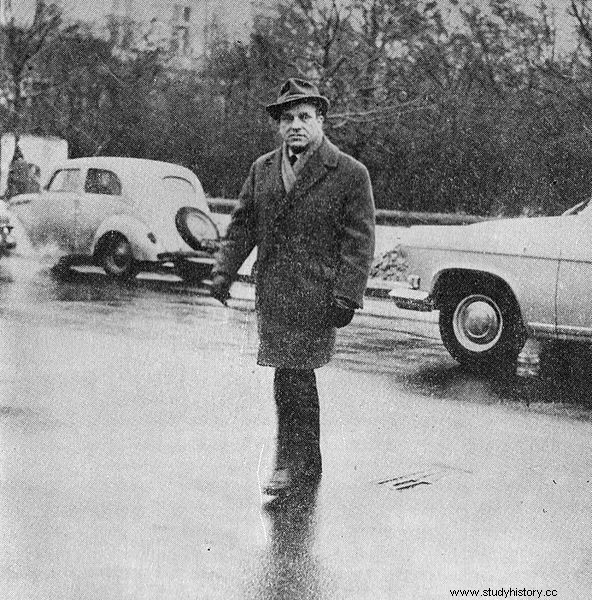
Michał Issajewicz after the war on the road of Aleje Ujazdowskie at the site of the Kutscher action
The attack on Kutschera was the most important successful action of the Polish underground against a high official of the German repressive apparatus in occupied Poland. It is compared to the attack on Reinhard Heydrich, head of the Reich Main Security Office, carried out in Prague by Czech SOE agents.
The Germans took bloody revenge on the Poles for hitting the very tip of the German occupation authorities. On February 2, 100 prisoners were shot near the site of the attack, and on the same day another 200 were killed in the ruins of the demolished ghetto. Continuing the retaliation for the attack on February 11, 27 Pawiak prisoners were hanged on the balconies of the burned-out house at ul. Leszno. A gigantic contribution of PLN 100 million was also imposed on the city and communes near Warsaw. The Warsaw garrison was significantly strengthened by sending additional Gestapo units from several cities. Many new bans and additional penalties were also introduced against Poles. On February 10, the Germans shot almost 400 people, and the investigation and attempts to find the perpetrators of the attack continued.
The posthumous wedding
The Home Army intelligence service and the soldiers of Agat's unit executing the sentence could not have known that Kutschera was getting ready for the wedding. His chosen one was 26-year-old Jane Lillian Steen, b. On December 9, 1918 in Kristiansund, Norway, who signed the Volkslist, that is, accepted German citizenship. Her family sympathized with the Norwegian Nazis. At the time of Kutschera's death, the Norwegian woman was heavily pregnant. Therefore, in Berlin, permission was given to organize the "posthumous wedding" of Kutschera. It was probably published by Heinrich Himmler himself, the commander of the SS and the police, the Reich Commissioner for Strengthening Germanity, fascinated by the occult and pro-German rituals, whose dream was to create a race of Nordic superhumans, ruling first over Europe and then the whole world.
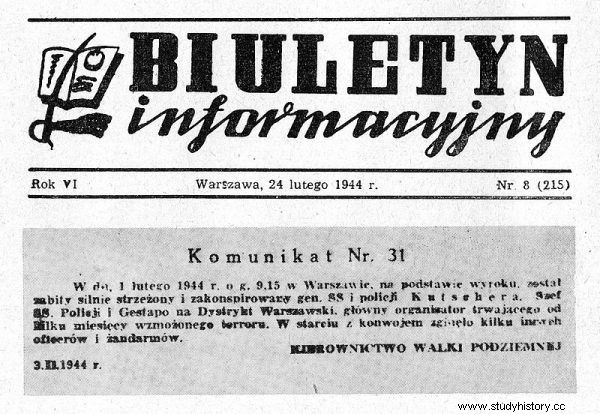
Note in the Information Bulletin
By giving his consent to the posthumous wedding, Himmler wanted to ensure the future of the child to be born.
The body of the shot Kutschera was first transported from al. Ujazdowskie to the hospital at ul. Solec 93 in Powiśle. There were probably treatments that gave the corpse an appropriate appearance (masking the traces of gunshots). From there they were taken to the so-called Deutsches Haus (German House) in today's Presidential Palace at Krakowskie Przedmieście. Another version says that the deceased was taken to the Bruhl Palace at ul. Wierzbowa at Saski Square.
The coffin with Kutschera's corpse was brought into the Ballroom, and a "bride" dressed in black stood next to it. The gloomy and macabre ceremony was accompanied by symbolism referring to ancient German times:flaming torches, huge swastikas on the "altar" and catafalque, as well as the ubiquitous SS runes.
Although the character of Kutschera and the history of the attack on him are known to most Poles, only a few who are interested in the history of the occupation in Warsaw know about his posthumous wedding. This was because the Germans did not spread information about the corpse's wedding ceremony, probably not wanting to expose Kutschera to ridicule. For obvious reasons, the German accounts of this ceremony have not survived, because most of its participants died in the course of further battles of World War II or were captured after the war.
The only account of Kutschera's wedding was made only in 1969 by an agent of the Home Army counterintelligence known as "Milena". This pseudonym was Theodora Flavia Matugenta von Seracsin-Żukowska, one of the most valuable agents of the Polish underground in Warsaw. Teodora Żukowska came from an aristocratic, multinational family and was born in Vienna. She had Austro-Czech roots, but in 1936 she acquired Polish citizenship. She married twice in Poland and became a staunch Polish patriot.
Thanks to her beauty and excellent knowledge of the German language, at the beginning of the occupation, she got a job as a secretary, later being promoted to a clerk at the governor's office of Ludwig Fischer's Warsaw District. All the time, however, she was an agent of the ZWZ-AK counterintelligence and with the consent of her commander, she signed the Volkslist to be even more credible in the eyes of the Germans.
Throughout the occupation, she was a deeply undercover agent of the Home Army in the midst of the German authorities of Warsaw and was never exposed. She also reported during the preparations for the attack on Kutschera (for example, she established the registration number of his car), and then - due to her position in the German administration - took part in his wedding and funeral. It is thanks to her memories that we know that the attack interrupted the preparations for the wedding, but ... the wedding took place.
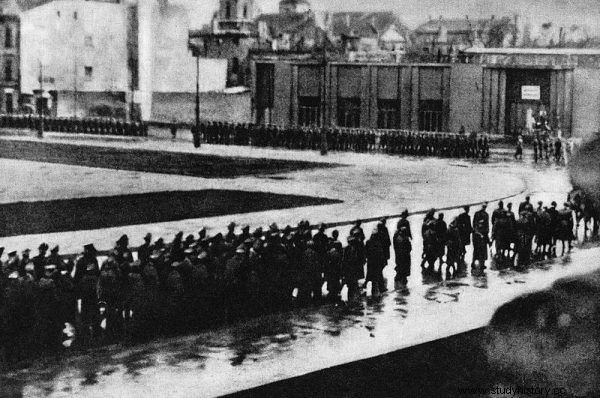
Kutschera's funeral in 1944
In one of her memoirs published in 1969 in Tygodnik Stolica Żukowska, she wrote:
The coffin was placed on the ground floor, in the hall, among the stiff green of laurel trees. There, the Germans officially paid their last tribute to their dignitary, who, within a few months, was able to earn a death sentence for the Polish Underground State. I stood among the others in the twilight, watching the gloomy spectacle. What could I feel at the moment other than satisfaction? How inhuman those times were! The wedding was lost, but the wedding took place! A bride with signs of advanced pregnancy stood next to the catafalque. This extraordinary ceremony was organized so that the unborn child could receive the surname of the father who deserved to be called the Kata of Warsaw.
In order to celebrate Kutschera's wedding-funeral, the Germans organized another street execution on the eve of the funeral in al. Róż, where 200 young Poles were shot. The bride, who was at the house of her deceased bridegroom at that time, heard the volleys of the shots, but she was able to endure the execution calmly.
After the wedding and funeral ceremony, the coffin with Kutschera's body was transported on a cannon-trailer pulled by six black horses through empty streets of Warsaw to the Gdańsk Railway Station. During the march of the procession, the Poles were driven out of the houses on the route. However, the Home Army intelligence agents Andrzej Englert (the father of actor Jan Englert - editor's note) managed to take pictures of the procession from behind a curtain in the window of the Bristol Hotel.
Another version given by Varsavianists says that the coffin was not taken to the Gdańsk Railway Station, but that it was transported by water, first by motorboat to Gdańsk, and from there by ship to Germany. The third version says that it was taken to the military airport in Bemowo, from where it was transported by air to Berlin.
After the wedding, the funeral, but where?
The ceremony of marrying the deceased, although macabre from today's perspective, was nothing strange in the Third Reich. By a special order of Hitler of November 1941, it was possible to recognize the marriage of a soldier who died at the front, whose fiancée was pregnant. In this case, the wife was considered a widow and the child was considered a wedding. Thanks to this, the bride, and then the young mother, could count on the help of the German state, as well as the child's pension due to the widow of the fallen. During the war, as many as 25,000 such posthumous weddings were performed! However, usually the soldier who died at the front at the wedding ceremony (for obvious reasons) was not there. The wedding at which the groom was Kutscher was unusual for several reasons:because of the "presence" of the groom's body, his very high rank in the Nazi hierarchy, the SS-man-pagan ceremony, and also because of Himmler's personal patronage over Kutschera and his bride.
An interesting and until recently unsettled matter is the burial place of Kutschera. Until now, based on memories and accounts from the occupation period, it was assumed that after a gruesome wedding, a coffin for a few hours and preliminary funeral ceremonies, she was transported along the Kościuszko Coast to the Gdańsk Railway Station, from where she left for Berlin. There, Kutscher was supposed to be buried at the Invalids Cemetery, the same where many eminent commanders were buried:generals and marshals from the First World War, as well as the Nazi criminal - Reinhard Heydrich. After the war, the Invalids Cemetery was located in East Berlin, right next to the Berlin Wall, and was largely devastated. The tombstones of the generals from the Third Reich period were also removed, but their bodies were not exhumed. It seems that Kutschera is not buried there after all. So where did the groom's body end up after the wedding?
Although it seems strange, Kutschera was probably buried in Powązki in Warsaw in February 1944! This is indicated by the findings made by Wojciech Parzyński and published in 2015 in the Information Bulletin of the World Association of Home Army Soldiers. Parzyński writes, relying on official documents, that in 1990, in connection with the marking out of a further section of al. Primate of the Millennium, the ashes of 2.5 thousand German soldiers killed in Warsaw and its vicinity during World War II were exhumed from the cemetery in Powązki. They were transferred to the German War Cemetery in Joachimów-Mogiły in the Bolimów commune in the Skierniewice poviat. The cemetery was opened on October 5, 1991. The remains of Franz Kutschera were also among the transferred remains.
Due to the responsibility for his numerous crimes, we did not put his name on the plaques on which they are buried in the cemetery. This name was also not included in a public internet bank of information. Kutscher was identified on the basis of the location of his grave in Powązki (part Q, row V, grave No. 6) - wrote Fritz Kirchmeier, Press Officer of the German People's Union for the Protection of War Graves. The German cemetery was moved from Powązki in 1990-1992.
Jane Lillian Kutschera remarried and died in Norway in 1994. She had five children. One of them was Franz Sepp Kutcher who decided to use only the name Sepp. He died in 2004
The most important thing for the inhabitants of Warsaw was that the successor of Kutschera - SS-Oberführer Paul Otto Geibel, refrained from carrying out mass executions in the streets of the city and this state lasted until the outbreak of the Warsaw Uprising. Let us add that in March 2002 the Walther PP Franz Kutschera pistol captured by the Home Army during the operation was added to the collection of the Polish Army Museum.
